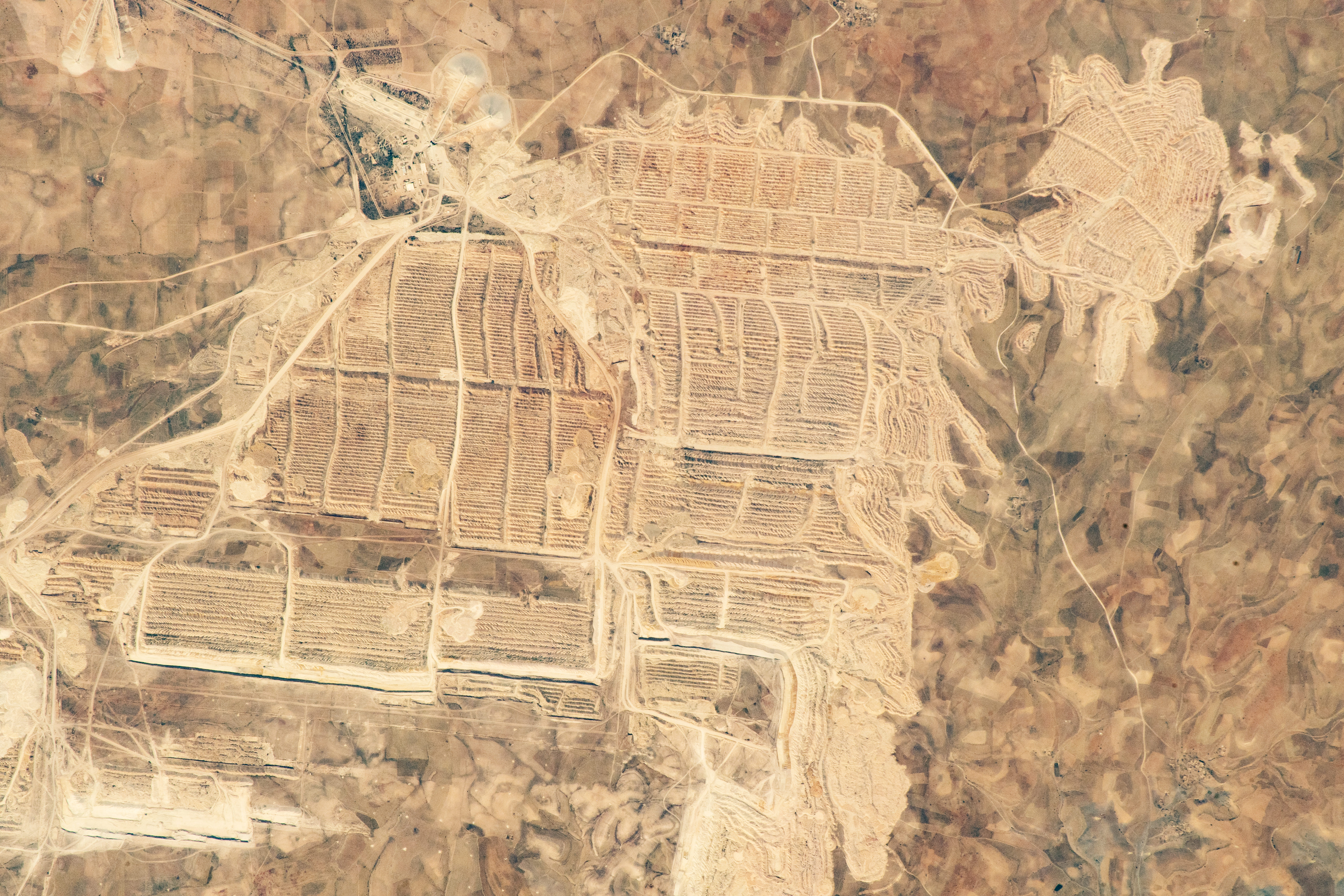October 1, 2019
This is the sixth article in an eight-part series published by GAI News that examines eight existing trends set to alter the structure of our global food system. Join us each month for a new installment, and be sure to read the first five articles here: Part I, Part II, Part III, Part IV and Part V.
By Jeremy Stroud, Bonnefield Investment Analyst
“Phosphorus has no substitute in sustaining all life and food production on our planet.” –Ashley, Cordell & Mavinic
![]()
There are few nutrients more essential to the progress of industrialized society than phosphorus. The mineral is necessary for plant growth, it is finite in its accessible form and it cannot currently be replaced by synthetic means. The implementation of phosphate rock in soils has allowed our society to flourish and scale just as much as any other agricultural innovation, and as leaders, it is time to take a closer look at the implications of its use.
Incorporating mineral fertilizers, such as phosphate and ammonium nitrate, into modern cropping systems is responsible for at least 40 percent of crop yield growth since the mid-nineteenth century.(1) That amounts to more food than humans had produced in the previous twelve thousand years combined. Phosphorus is used by farmers to promote the storage and transfer of energy and enable processes such as photosynthesis, respiration and nutrient transportation. While manure was originally used for its phosphorus content, industrialists in central Florida found that phosphate-rich rocks could be mined and applied to our soils for the same purpose. (2) While nitrogen, the other major element for plant growth, may be formed through naturally occurring cycles, phosphorus typically cannot. Here lies the crux of the matter: the agricultural sector is currently mining and using phosphate at an unsustainable pace and it will be farmers, particularly in developing countries, who will feel the effects most profoundly.
Growing Demand and Shrinking Supply
Last year 270 million tonnes of phosphate were mined throughout the world – a 20 percent increase from 2014 levels and a 38 percent increase since 2011.(3) For context, there are about 70 billion tonnes of known phosphate reserves, 80 percent of which is not feasible to access with current extraction technology. Modern row crop species such as corn, wheat, soy, and rice have been bred with ravenous appetites for phosphorus, and consumption has risen in a non-linear fashion since the 1960s as farms have depleted their soil’s naturally occurring nutrient stores. Some estimates suggest we will reach peak phosphorus production by 2040, others by 2070, and others in the 2100s.(4) Regardless of the estimated timeframe, the peak may very well come, and it will likely trigger a surge in fertilizer prices for agricultural producers. The chart below demonstrates the source of phosphorus use per acre in farmland globally.
Figure 1: Historical Global Sources of Phosphorus Fertilizer, 1800 – 2010 (5)
Source: Cordell et al., 2009
In addition to the issue of its scarcity, phosphate reserves are not evenly distributed. Over 75 percent of the world’s phosphate stores are in Morocco and Western Sahara which is effectively controlled by Morocco. Massachusetts Institute of Technology estimates that we have less than 80 years of readily available deposits left at our current rate of consumption. (6) The image below shows the largest phosphate mine in Africa, Bou Craa in the Western Sahara, which holds about 3 percent of the world’s phosphate rock.(7) It is the size of 3,000 football fields and utilizes a 100 km conveyor belt, the largest in the world, to move the crushed product to its coast for export.

The phosphorus dilemma has become a balancing act between applying phosphorus to increase crop yields and feed the population, while also responsibly extracting and applying the resource. Our historical practices have been heavily slanted towards the former.
Bones of Contention: Necessity Versus Excess
With only 15 percent of phosphate absorbed for plant use, surplus minerals added to the soil are generally lost due to runoff, leaching or accumulating in its non-accessible form. As dissolved phosphates reach local waterways, they activate phytoplankton growth which begins the process of eutrophication, thereby spurring mass algal blooms, fish mortality and riverbed sedimentation. Dissolved phosphates also have a tendency of entering groundwater and aquifer sources, leading to the deterioration of water health and, in some cases, contamination of drinking water. So how can we reduce reliance on phosphorus while also maintaining strong yields? How can we prevent eutrophication and ensure the plant retains more of the phosphate applied? The answers lie in responsible investing, management and oversight of farming practices. In short, reducing our phosphate use and implementing sustainable techniques could rebalance the natural phosphorus cycle.
1. Invest where phosphorus is not a constraint
Quite simply, some farming regions use far more phosphate rock per hectare than others. The European Union, Canada, and the US combined will use less than half the phosphate per hectare than China. As seen in Figure 2, Canada applies some of the least phosphate fertilizers per hectare of any major grain producer.
Figure 2: Phosphate Use per Hectare of Cropland, 2002-2014
Source: United Nations – Institute for Environment and Human Security (UN-EHS), 2015
Canadian, US and European grain farms generally require less phosphorus and potassium, yet more nitrogen fertilizer than other comparable farms in Brazil, Australia and Europe. This is due to their history of less-intensive farming practises, their colder winters, their common crop rotations, and their typical soil nutrient profiles. This allows Canadian farmers to be in a sustainable position over the next century as phosphate reserves continue to be depleted, while nitrogen requirements may be achieved through manure application and crop rotation techniques.
2. Conservation practices and biologicals
To become available for plant production, organic phosphorus may be mineralized by micro-organisms in the soil. One specific organism, a fungus known as mycorrhizae, works in a symbiotic way with over 80% of vascular crops such as wheat, corn, potatoes, and rice. It has adapted to help plants for this very purpose, with the potential to be used to increase phosphorus uptake efficiency by 50%. This is an active biotechnology that has been around for 450 million years, and its further incorporation into our crop mix could provide meaningful effects for agricultural sustainability. The use of common bush crops, such as the Mexican Sunflower, may be used as a green manure which adds organic phosphorus to the soil as well.(8)
3. Innovation and Technology
Some researchers, governments, and startups believe that the effects of the phosphorus issue may be reduced by applying fertilizers with more precision and through recycling our existing products. Startups such as NuReSys aim to recover phosphorus nutrients from human urine.(9) Geneticists are also working towards phosphorus efficient rice crops with larger root systems which would be able to extract more available phosphorus in the soil.(10) In addition, targeted fertilizer applications can reduce the amount of phosphate used by farmers, thereby cutting their costs and mitigating potential nutrient leaching.(11) As farmers and businesses incorporate more technology with environmentally beneficial characteristics, the challenge of phosphorus overuse may begin to turn into an opportunity.
Throughout this series, the same point has been made; those who have the opportunity to allocate capital also bear the responsibility to deploy their resources towards environmentally resilient strategies and regions. A Greek Proverb may articulate this notion more eloquently:
“A society grows great when old men plant trees whose shade they know they shall never sit in.”
Continue Reading:
Part VII – Bee Fatalities and the State of Pollination
About the Author
 Jeremy Stroud is an agricultural investment analyst with Bonnefield Financial based in Toronto, Canada. With a background in international food business, he offers insights on global agri-food and water
Jeremy Stroud is an agricultural investment analyst with Bonnefield Financial based in Toronto, Canada. With a background in international food business, he offers insights on global agri-food and water
investments, value chain analysis and economic systems. He has volunteered and worked with a spectrum of primary and vertically integrated agricultural groups in North and South America, Europe
and Africa.
Sources:
1 Stewart and Roberts, 2012. Food Security and the Role of Fertilizer in Supporting it.
2 Faradji and de Boer, 2016. How the great phosphorus shortage could leave us all hungry.
3 US Geological Survey, 2019. National Minerals Information Center, Phosphate Rock Statistics and Information.
4 Global Phosphorus Research Initiative, 2019. National Strategic Phosphorus Advisory Group.
5 Cordel et al., 2009. The story of phosphorus: Global food security and food for thought.
6 Massachusetts Institute of Technology, 2016. The Future of Strategic Natural Resources: Fighting Peak Phosphorus.
7 National Aeronautics and Space Administration, 2018. Earth Observatory.
8 Cho, 2013. Phosphorus: Essential to Life—Are We Running Out? .
9 NuReSys, 2019. Intergral Phosphate Management.
10 Kant et al., 2017. Phosphorus Efficient Phenotype of Rice.
11 Agri-Food Canada, 2019. Variable rate nutrient application.

Let GAI News inform your engagement in the agriculture sector.
GAI News provides crucial and timely news and insight to help you stay ahead of critical agricultural trends through free delivery of two weekly newsletters, Ag Investing Weekly and AgTech Intel.




